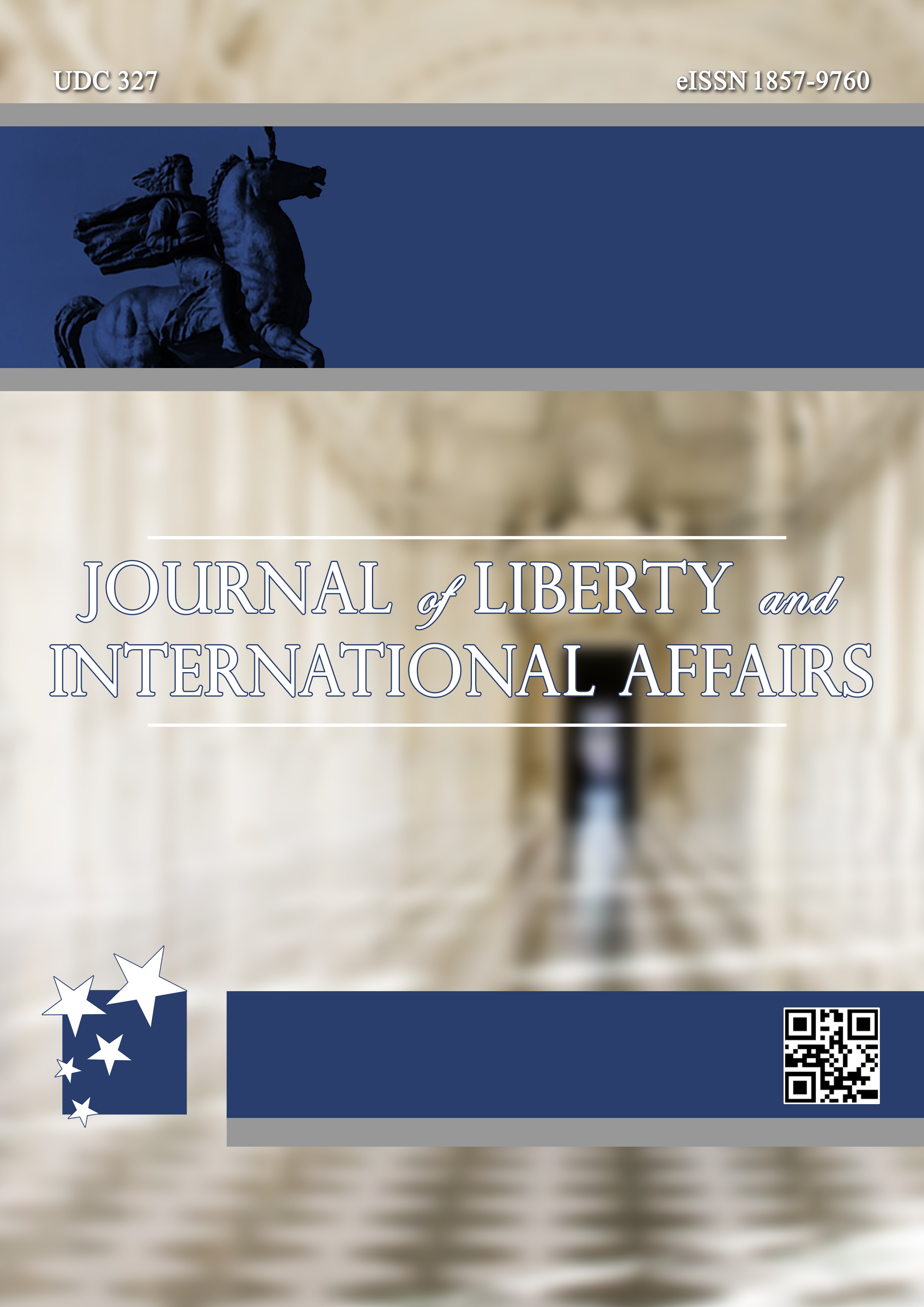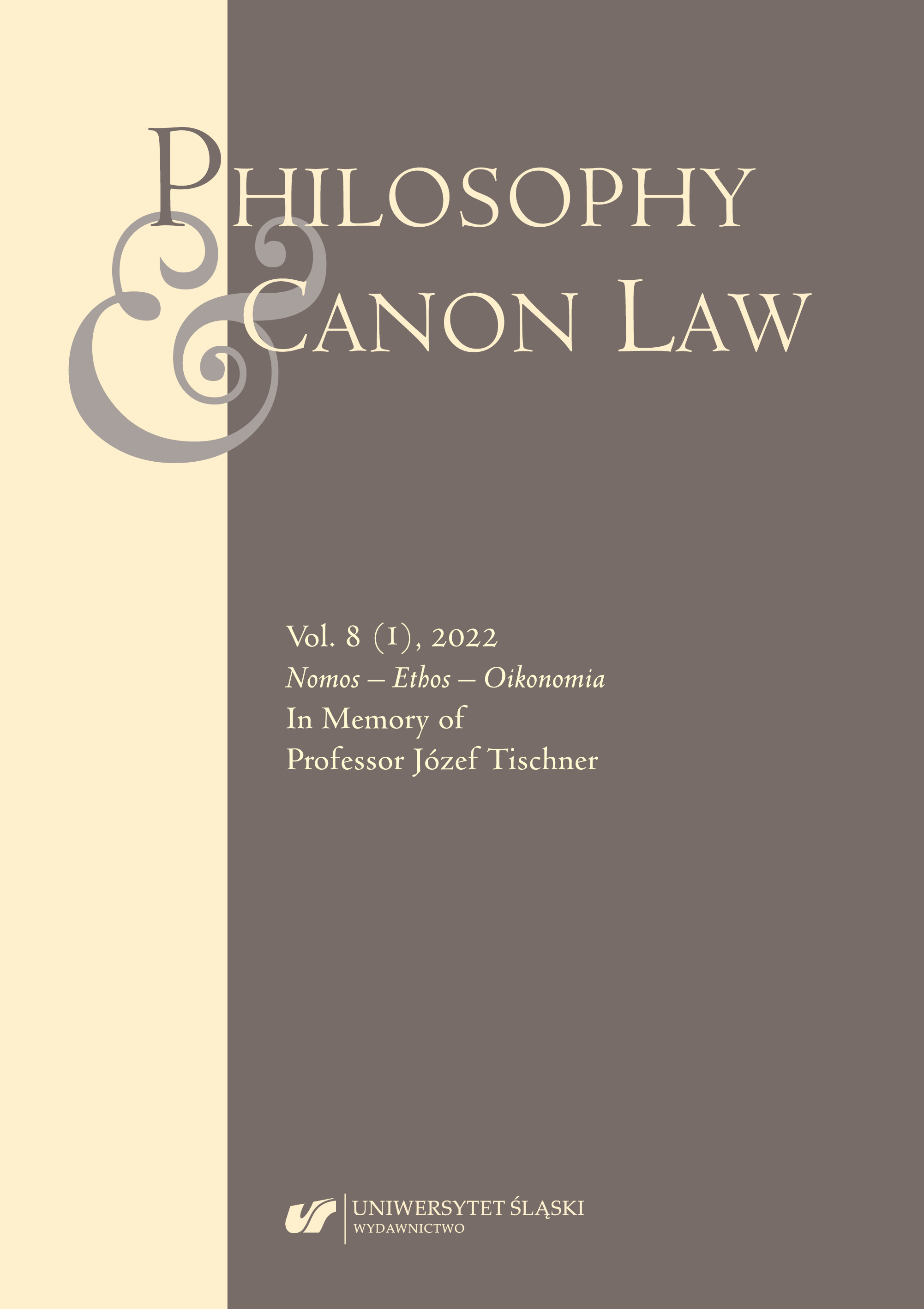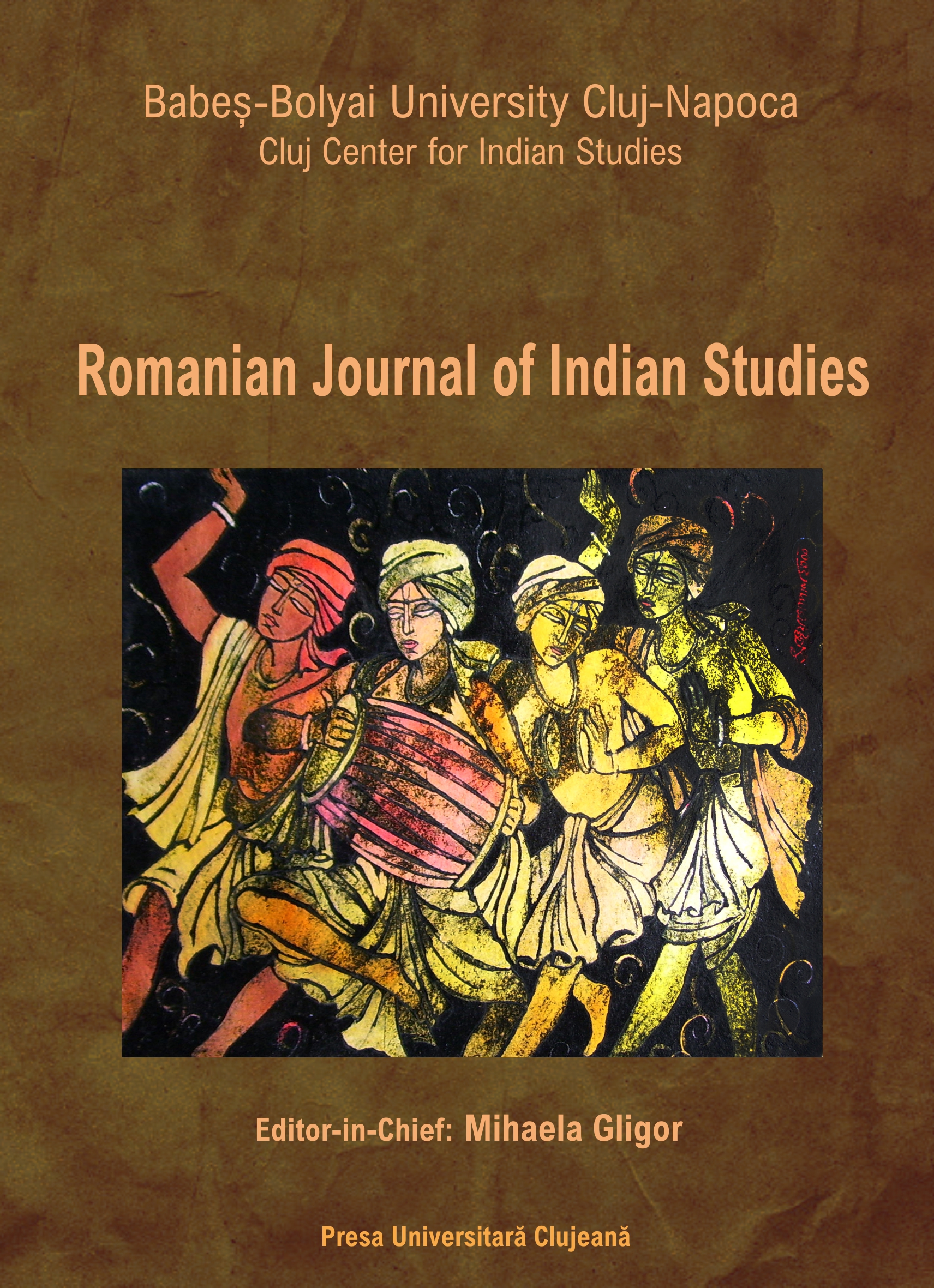
Panorama inna niż wszystkie
Book review of: Panorama współczesnej filozofii, Jacek Hołówka, Bogdan Dziobkowski (ed.), Wydawnictwo Naukowe PWN, Warszawa 2016, pp. 559.
More...We kindly inform you that, as long as the subject affiliation of our 300.000+ articles is in progress, you might get unsufficient or no results on your third level or second level search. In this case, please broaden your search criteria.

Book review of: Panorama współczesnej filozofii, Jacek Hołówka, Bogdan Dziobkowski (ed.), Wydawnictwo Naukowe PWN, Warszawa 2016, pp. 559.
More...
One of the essential postulates of political orientation and determination for the building of stable societies and a functioning political system in its content recognizes and imposes the need to examine the relation of relevant political actors to constitutionalism and human rights as concepts and preoccupations for any modern society. Also, constitutionalism and human rights and freedoms as its inseparable category manifest the political values and the corpus of essential and common political goals and commitments of a particular political community. Political Islam as an ideological political subject has its own sources and a valuable orientation framework through which prisms and perceptions can be interpreted or extracted by individual axiological determinants to certain issues. This paper analyzes exactly the relations of political Islam with constitutionalism and human rights, and similarly to the so-called framework it draws attention to the concepts of power, the mechanisms of control and compliance with the Sharia regulations. At the same time, the importance of human rights and freedoms in the Islamic narrative, their nature and scope, as well as the differences with the western established documents in this area are emphasized and analyzed.
More...
Freedom, in the context of the ethical views of the Russian classics – Berdyaev, Solovyov, Dostoevsky and others, is examined. Emphasis is placed on freedom and the enormous challenges to achieve it. The faith in Man and the possibility for divine incarnation is a distinctive characteristic of Russian religious philosophy. The first part discusses Berdyaev’s statements about God and unbridled freedom. He regarded Christianity as a new beginning in the understanding of freedom. Berdyaev highly appreciates the contribution of Dostoyevsky to this topic. Freedom and related suffering are the big themes of Dostoyevsky. The battle between Christ and the Antichrist is studied.
More...
The article compares various interpretations of Dostoevsky's theodicy (“The Karamazov Brothers”) by Russian philosophers of the Silver Age generation. The focus of the research interest is focused on the views of Nikolai Lossky. A brief analysis of his philosophy – metaphysical personalism – is made, with particular attention being paid to the idea of the over-time of substantive agents. It is shown how this idea, borrowed from Leibniz, plays a decisive role in explaining the origin of evil and the meaning of the suffering of the innocent. A comparison is made between metaphysical personalism and Christian personalism, and the essential difference between them is indicated. Thus, the discrepancy between Lossky's approach and Dostoevsky's attitudes was also highlighted. The main idea of the article is to show the fundamental inability of rational solution of this problem.
More...
The paper investigates the pedagogical views of two distinguished bishops from the most recent history of the Bulgarian Church – Metropolitan Methodius Kusev and Metropolitan Boris Nevrokopski. On the basis of comparative analysis the important moments of their Church ministry have been traced, as well as life in the background of the age in which they lived as factors that influenced their pedagogical views. The two bishops identify three important factors in the educational process: faith, family and school. According to them, the influence of materialistic views in the educational process leads to the destruction of the Bulgarian school and society, as a result of which the school only educates without bringing up.
More...
Learning, creativity, and innovation are considered as the axis of the activities of all educational and entrepreneur-based institutions. Learning style of students as one of the factors effective in learning and academic progress has always been taken into consideration. By identifying the learning style and rate of creativity of individuals, each style can be a more appropriate teaching method adopted by teachers and also a more correct method of learning by learners. Accordingly, the main goal of the present article is to identify the differences of learning styles of individuals in different academic majors and the rate of the creativity of individuals in each learning style. The present methodology employed in this research is of descriptive-correlational research design. The statistical population consists of all the last-year students at the high school level in the city of Ghaen. The statistical sample consisted of 115 girls and 117 boys selected by classified sampling. Kolb’s learning style inventory and Abedi creativity were used to collect the required data. These two tools are standardized, therefore their validity is verified. On the other hand, the reliability of the Kolb’s inventory and that of Abedi’s creativity were 0.74 and 79.5, respectively. To analyze the data obtained by Chi-square tests, one-way analysis of variance, Pierson covariance, and stepwise regression were employed. The results show that there is a meaningful difference between the creativity of the students with diverging and assimilator learning styles. Learning styles of students of different branches are also different. Creativity of the students of Mathematicsis more than that of the Humanities and there is also a meaningful negative relation between concrete experiential learning methods and creativity (r=0.702 and p<0.01).
More...
The analysis of the concept of “self-disclosure” and implicitly, of the benefits it has upon the psychological and social dimension, reveals from an epistemic viewpoint the need for a theoretical and practical foundation well outlined from a scientific viewpoint. Thus, a comparative study at the theoretical level, but also at the level of inter-subjective practice transposes the results obtained over time in the area of psychological and social consequences and effects. Moreover, such epistemic results acquire epistemic validity in the inter-subjective field and space insofar as we can see, from our point of view, a series of (affective, cognitive) benefits related to the interpersonalrelationships or to the therapeutic relationship between the patient and the physician (analyst).
More...
The proposed text deals with some aspects of the topic of sacrifice – a topic in the field of philosophy and sociology of religion, cultural and philosophical anthropology. The Old Testament and New Testament understandings on the issue are compared, emphasizing the importance of the principle of personality as the main dividing line. Kierkegaard's famous position (and that of Lev Shestov who followed him in this respect) on the biblical story with Abraham and Isaac is commented on. The views of the religious philosopher (and concentration camp inmate) Alexander Meyer, whose work on sacrifice (1933) was later published in Paris, are presented.
More...
The text aims to explore the soteriological nature of the ascetic views of two of the most remarkable ascetic fathers. Based on a comparative analysis, are traced the general moments in their writings, as well as their differences, which outline the development of the ascetic tradition from antiquity to the present day. Abba Dorotheos conveys the ascetic experience of the Egyptian ascetics of the sixth century, the core of which is the spiritual struggle, the cutting off of passions and the acquiring of virtues. At the heart of the Christian feat, St. Porphyrios places the love for God, which transforms passions, converts evil and deifies man, with the focus being not on the fight against the passions, but on Christ and the communion with Him. Sacraments, prayer, worship lead one to praise and contemplation of God. In the words of St. Porphyrios of Kavsokalivia the correlation between soteriology and ecclesiology is much more clearly expressed.
More...
Man is often told that life begins with birth. Hindu tradition is one of those examples that highlight the fact that life begins much earlier, with early stages of pregnancy. We shall not adopt a position from a medical or ethical point of view, but will emphasize this claim judging by the care and effort put into the well-being and good health of foetus and expectant mother by members of this religious tradition from ancient times. Archaic Hindu society was very strongly under the spell of the supernatural and magical, which surfaces in many sacred texts. It is interesting to notice and understand how the supernatural, religious and social intertwine and bring order into the lives of its people.The present paper focuses on pre-natal rites of passage as having an ordering quality in man’s life, mentioning key examples from sacred texts related to cultural and religious details that are the backbone of Hindu tradition. It is a shy attempt to bring to light features in the thought process of the ancient Hindu society in order to better relate and comprehend the treasures of its rich past.
More...
The construct “mentalization” in our Western psychological knowledge and more specifically in clinical work appeared several decades ago. The focus of the Western understanding and research of the construct and of mentalization-based therapy is put on the psychopathological dimensions of the process of mentalization. This article presents a brief analysis of the existential functions of mentalization in the thousand of years old Asian philosophical-psychological systems in an attempt to highlight some important implications for our Western views. The analysis is based on the paradigm of critical psychology as a concretization of the principles of Immanuel Kant‘s critical philosophy in the field of psychological knowledge.
More...
This article aims to analyze the beginning of the transition from logos to myth. To incorporate the religious into his Enlightenment philosophical system, Schelling presents a reconstruction of myth. The conceptions of the religious consciousness of the Self from antiquity as presented. The myth embodies cultural reality and the history of self-consciousness, an idea that was later considered by Mircea Eliade. Myths evolve in parallel with human evolution. The need for the development of abstract thinking and the complex social environment presuppose the new mythology. Christianity in history appears as part of the mechanism of human development, which generally symbolizes the transition from mythology to Christianity. Theology must abstract mythologies from the purely divine, but together they participate in the formation of human consciousness.
More...
The article shows that in matters of philosophy of religion, when the sphere of interest of Wittgenstein went beyond logical and linguistic analysis, he attached special importance to a pragmatic approach to the interpretation of religious experience. Wittgenstein’s philosophico-religious studies were largely inspired by the events of his own life , as well as the ideas of individual thinkers, including the pragmatic philosopher William James. In Wittgenstein’s work one can find both a substantiation of the originality of religion and its impossibility of analysis from the standpoint of science, and a conviction in the expediency of religious experience in human life. It is revealed how Wittgenstein, analyzing the main manifestations of religious experience, pragmatically eliminated contradictions in the comprehension of knowledge about God (as unspeakable), pointed out the importance of transition from skepticism to belief as a basis for experience of absolute safety, took into account socio-practical aspects of various ethico-religious experiences such as feeling guilty. The author finds out how Wittgenstein interpreted the practical value of religious experience, analyzed the language of religion, as well as revealed its socio-psychological and ethical aspects.
More...
Through a critical analysis of J. Morawiecki’s Szuga. Krajobraz po imperium [Szuga. Landscape after the Empire], Paweł Rogalski ponders a number of questions: Does Russia still exist in the 21st century in the imperial discourse? Has the superpower paradigm, as a certain manifestation of anarchy and a fallen myth, not already been ruined or exhausted? Is the empire an episode necessary historically to balance forces in a global crisis? Is the war in Ukraine (2014 and 2022) perhaps the “new-old” founding murder of the Eastern civilization, incorporating the model of the Russian empire? Does ideology as a glue, instead of positively constructing the subjectivity of the community, contribute to building a new, dangerous phantasm of the empire? In this context, the travel narrative authenticates the message by reaching abandoned and blurry places, where the encountered human subject generates not only events and adventures, but is a record of ideological traces left on the body and the psyche. As Czesław Niedzielski wrote: “In all varieties of reportage prose, the identity of the speaking subject and the author (regardless of the form of the reporting) is one of the basic premises determining the documentary and, most of all, the authentic qualities of the genre”.
More...
The present article examines Józef Tischner’s idea of upbringing (wychowanie) in establishing the new awareness of solidarity among the Polish workers and people through an awakening to conscience. The present moment served as a revolutionary alternative to socialism. I look at Tischner’s critique of Marxism and the central issue surrounding base and superstructure. Then I turn to his recovery of the Polish tradition of ethical ideals, especially in the person of Maximilian Kolbe and John Paul II. The text provides a detailed analysis of the chapter on upbringing in The Spirit of Solidarity. Tischner’s notion that upbringing is a personal bond established in trust to live in hope for improvement in mind and heart is placed in the context of the solidarity as a social bond establishing an ethical community transcending the political quest for power and the need to find an enemy. The text analyzes the various counterfeit forms of education in order to deepen our awareness of the meaning of authentic upbringing. Salient points of his teaching are discussed in conclusion.
More...
This article attempts to show if the entire story of the Vālmīki Rāmāyaṇa is perhaps a narrative which is a subtle depiction of the interplay of the three guṇas of sattva, rajas and tamas which are cardinal principles in the ontology, cosmology, psychology and soteriology of the Sāṅkhya-Yoga system of classical Hindu philosophy.
More...
This article is merely intended to summarize the four principal viewpoints of the systems of Classical Hindu thought on the supreme scriptures of Brahminical Hinduism, i.e., the Vedas. It does not give nor delve into the long-winded arguments advanced by the schoolmen of each of these systems that seek to justify their positions on their doctrine of scripture and its associated and ancillary issues
More...
Rabindranath Tagore’s dramatic techniques employ a rich tapestry of symbolic language, where imagery serves as a vehicle for both narrative progression and the expression of complex social critiques. Set against the backdrop of rigid caste hierarchies prevalent in society, the play presents the transformative journey of Prakriti, an untouchable woman who confronts the deeply ingrained social prejudices of her time. Through its poetic language and richly layered imagery, Chandalika goes beyond a mere narrative of social critique to become a profound meditation on human dignity, identity, and freedom. Through a detailed analysis of these imagistic elements, this study highlights how Tagore’s visual language not only enriches the dramatic experience but also invites a deeper understanding of the socio-cultural issues addressed in the play. The paper argues that Chandalika serves as a powerful example of how metaphors of liberation, when intertwined with visual symbolism, can transcend the constraints of conventional drama to deliver a potent message of human dignity and self-worth.
More...
In order to create an orderly state, the first imperial chronicles emerged in the early 8th century in the territory of modern Japan through the integration and systematization of mythical elements that proved the legitimacy of the government and the descent of the imperial Yamato lineage from the supreme deity of the Shinto pantheon - the Great Sun Goddess Amaterasu. This mythic paradigm was created on the existing mytho-historical foundations fostered by cultural and political contacts with the Korean kingdoms and the Chinese empire. There is evidence that the cult of the solar deity, originally portrayed as a male principle, originated in a corpus outside the Yamato mythological system. And since male-female pairs of rulers were common (first it was the gods, later the ruler and the shamaness), it is possible that at some point the distinction between the sexes was blurred and then the female side prevailed. However, the female ancestral deity does not indicate a period of matriarchy. This symbolic type of goddess, who initiates a patrimonial lineage with rare female exceptions, was created by members of a privileged group of powerful men to legitimize their own power structures. Moreover, the cult of the mother goddess is not limited to the solar principle, but is associated with weaving, silk production, and agriculture. Thus, the simple assertion that the Yamato imperial lineage descended from the goddess Amaterasu raises numerous questions and doubts, which this essay attempts to answer.
More...
This article seeks to cast a new light on an ancient religion, one that stands as one of the most innovative and oldest religions in the world. It has introduced profound concepts such as human rights, eschatology, life, light and fire, humanity, free will, love, and many other valuable notions to various religions. Major religions like Judaism, Christianity, and Islam have also been influenced by these concepts. The article posits that Zoroastrianism and the religious heritage of ancient Iran essentially constitute a global legacy for all of humanity.
More...